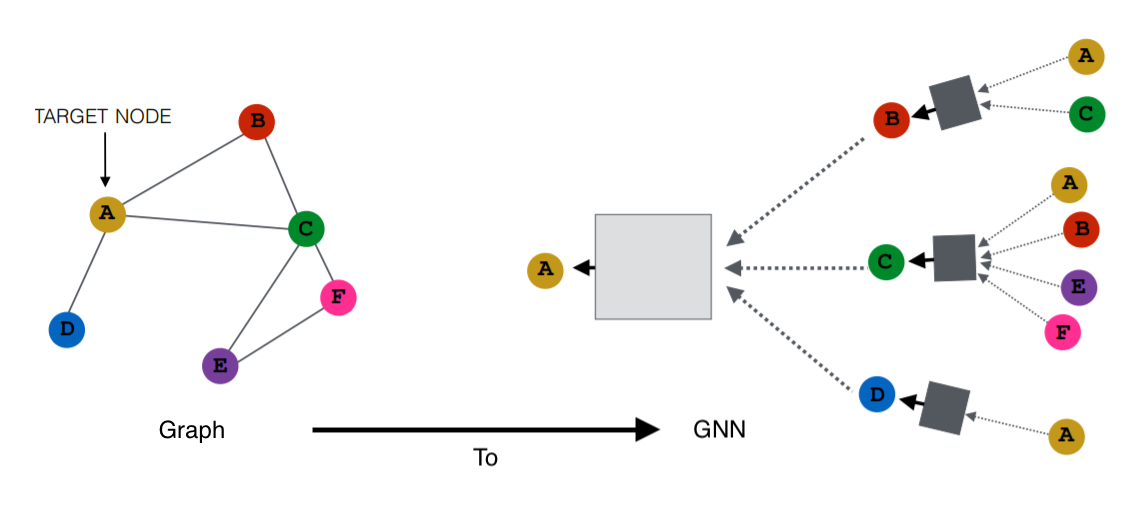Graph2GNN¶
Graph2GNN is a library that helps you prepare data from a graph database for use in training graph-based machine learning models.
 Example of a GCN from Ying et al., 20181
Example of a GCN from Ying et al., 20181
Overview¶
Graph2GNN in 3 sentences... Write a query (with the guidance in the docs) to get data in your graph. Graph2GNN will take care of extracting the data in a way that separates the data from the graph's structure. Perform EDA and prepare the vectors, then recombine it with the graph-structure files for use in graph-based ML (not only GNNs).
To see in-depth walkthroughs, check out the examples
A simple node-classification example¶
To get the data out of Tigergraph, write a query that follows this format:
CREATE QUERY cora_data() FOR GRAPH CoraGraph {
SetAccum<Edge> @@edges;
PaperSrc = {Paper.*};
PaperResult = SELECT s FROM PaperSrc:s -(_:e)-> Paper:tgt
ACCUM @@edges += e;
PRINT @@edges;
PRINT PaperSrc;
}
The query can be as simple or complex as need be. For getting one subgraph out, you need to print the @@edges SetAccum and a vertex set. Additional techniques for graph classification are described in the documentation, here.
Once the query is done, move to your python code.
from graph2gnn import Tiger2GNN
class Cora2GNN(Tiger2GNN):
def __init__(self, **kwargs):
super().__init__(**kwargs)
# create the config object
tg = Tiger2GNN(
host='http://your-graph-host',
graph_name='CoraGraph',
token='<bearer token>',
query='cora_data'
)
tg.call_singlegraph_query() # Calls the query and organizes the data
tg.compute_vertex_vectors() # *Use the patterns in the docs to complete this*
tg.assemble_data() # *Use the patterns in the docs to complete this*
Now you're ready to move to preparing the data and training your GNN! Here's the state of your current directory and where your vectors and adjacency info are stored:
project-root
└── tgresponse/
├── subgraph/ (N/A for queries that return one graph)
├── parts/
│ └── partition_{n}.json (whole query responses, saved by partition)
├── VertexType.json (vertex set response... create vectors from these files)
├── edges.csv *(adjacency info... will become a model input)
└── your_app.py (or .ipynb)
Again, for an in-depth walkthough, check out the examples.
Installation¶
Currently supported graph DBs¶
- Tigergraph